
“Simon Dove drops to new lows on discovering his lowering spring–equipped Civic just wasn’t quite slammed enough”
What is it with our undeniable obsession with cars that are sump-dragging, tow-hook-scraping header-bashing low? This passion is instantly evident in almost every car build we feature here in NZ Performance Car, so how do you top something so common it’s almost seen as an essential feature? Someone who has been doing so for years now is Simon Dove, a professional air-ride installer, and owner of Get Low Customs. Simon’s day-to-day passion, and his job, sees him regularly slamming customer’s cars — at the expense of his own project, a 1992 Honda Civic build that’s been going for the better part of seven years.
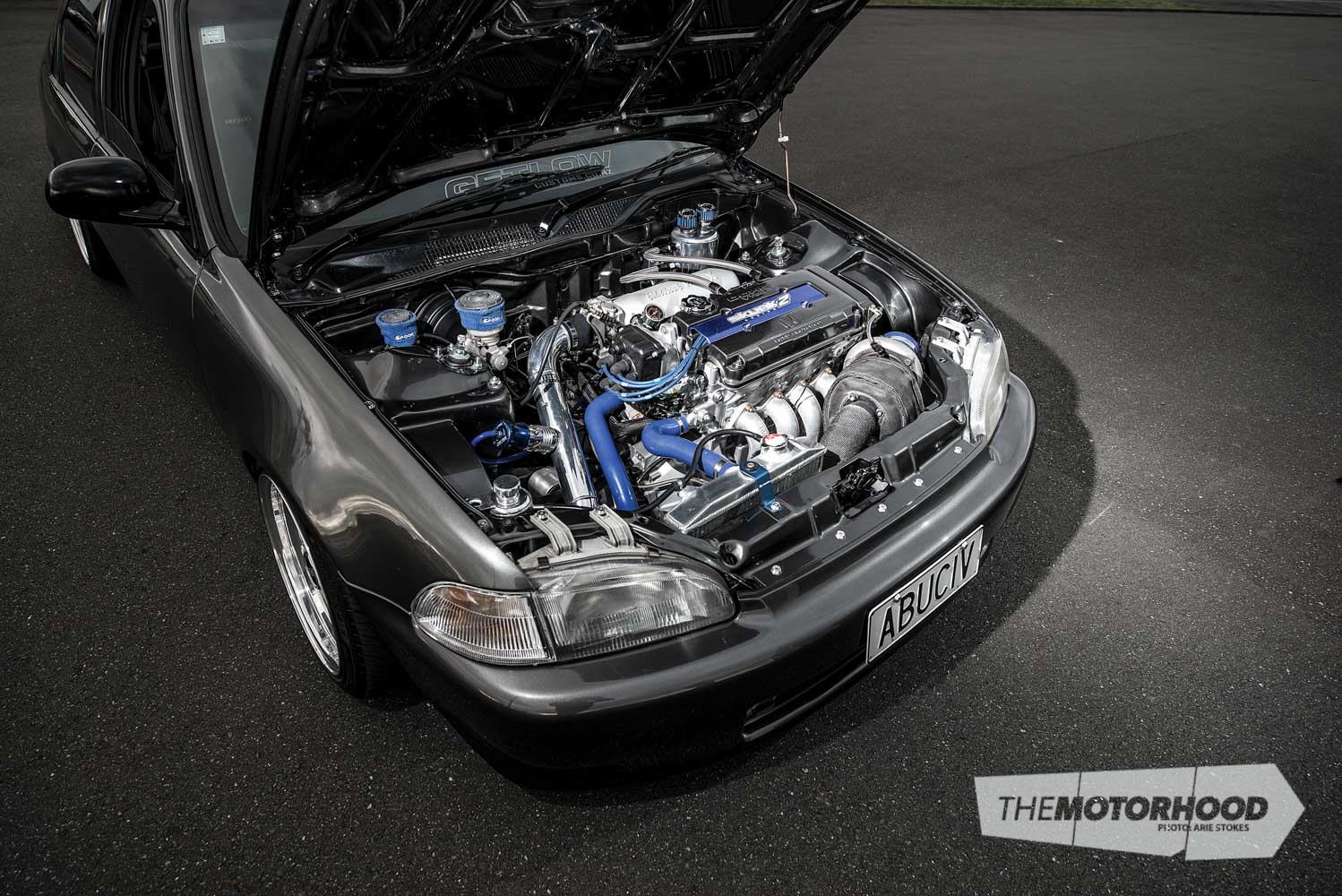
Airbag suspension hasn’t really taken off in Japanese imports in New Zealand, but according to Simon it’s on the up and up as the knowledge that airbags can ride comfier than coilovers, and handle better too, is becoming readily available. To prove this point Simon’s been painstakingly building his wild Honda Civic EG for both go, and show.
He purchased his completely factory Civic Ferio 13 years ago from a car yard in Hamilton with the help of his parents, but it didn’t take long for the car-modifying bug to bite, he told us. “A couple of years after buying the Civic, it had an entry-level airbag suspension kit and mags. It was the first car I installed airbags into. It had lowering springs in it originally, and they weren’t low enough — coilovers wouldn’t go low enough either.” Although it took him a while to work out how to install them, Simon’s American-imported airbags saw the Civic as low as it could possibly get with the factory body and wheel tubs — but this wasn’t enough. Having airbags changed Simon, he’d seen the light, as it were. Never again would a steel spring find its way anywhere near his Civic.
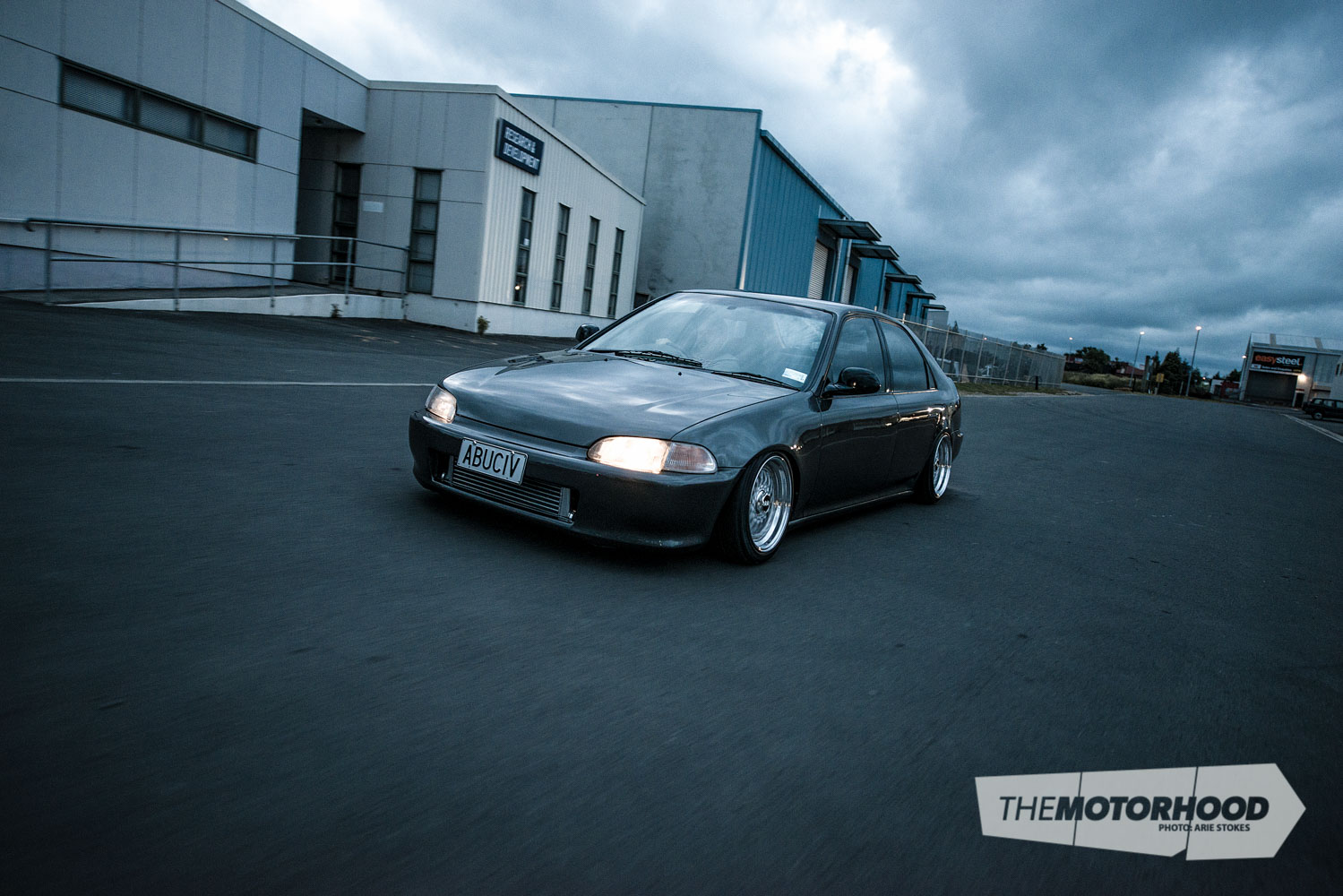
“It still wasn’t low enough on airbags,” Simon told us, laughing. Apparently when your chassis is near-on scraping the ground, you need more low. What this meant for the Civic was that it would have its factory wheel arches tubbed, front and rear. The rear tubs are so large that the back doors had to be modified, but now, on the lowest setting of the newly installed AirREX air struts, it’ll tuck 18-inch wheels no problem — while putting the chassis on the ground.
The tubs were last on the list of exterior body modifications, which started out by simply shaving the door handles. Now, fully repainted in a stunning Ferrari Silverstone hue, the Civic’s four-door lines have been smoothed down, front to back, side to side — and its seamless appearance is tastefully set off by a set of genuine, relipped BBS RS wheels measuring 15×8-inch up front and 15×8.5-inch down the back. Simon initially planned to use 18-inch wheels, but as the scene matured, so did his tastes. The only problem with the street-treaded 15s, though, is they don’t provide anywhere near the traction the transplanted engine requires, as it’s had a fair tickling by means of a large single turbocharger.
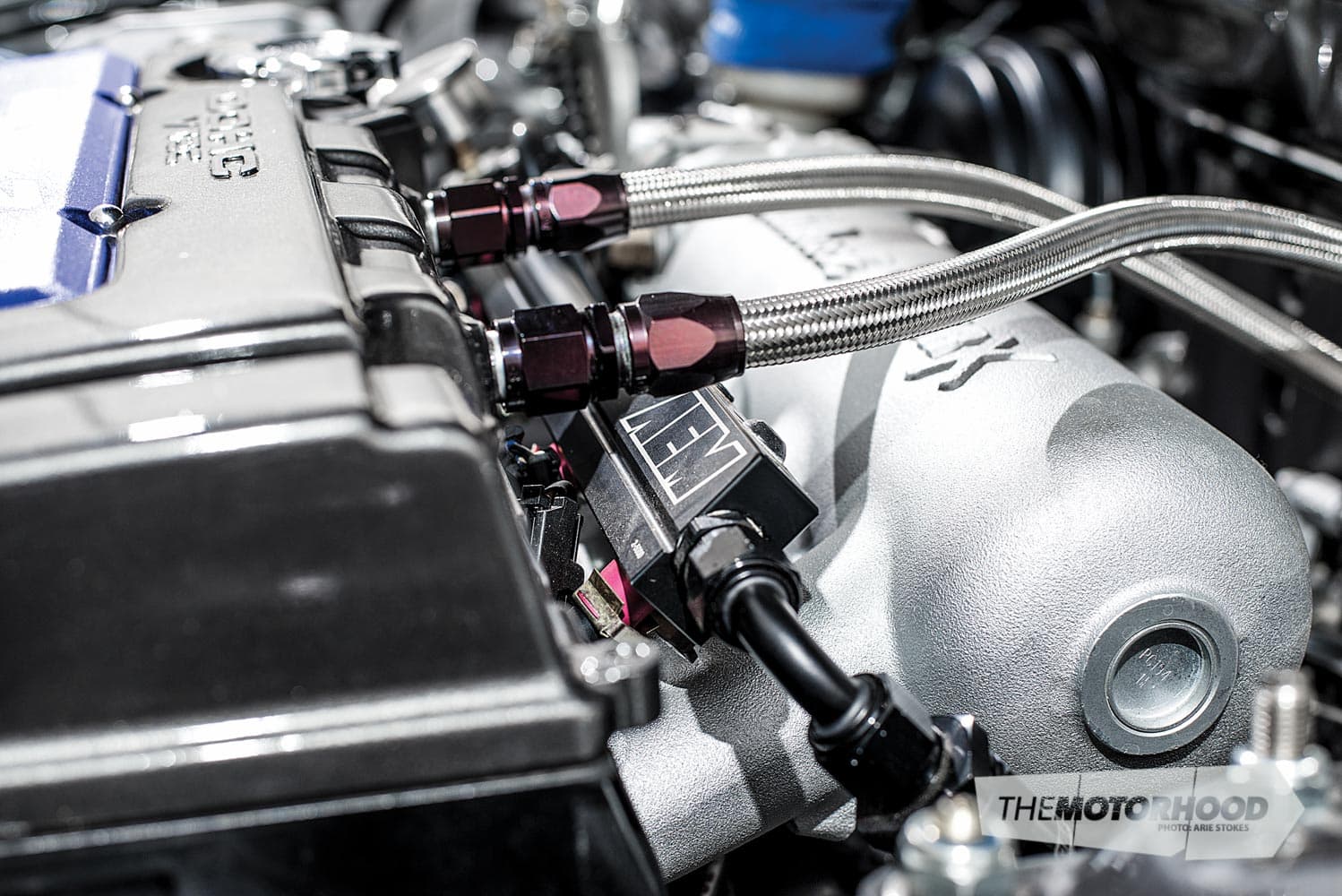
When you’re going all-out on every aspect of your build, it won’t be complete without a fair amount more whack than the factory lump provides. The original D15B single-cam 1500cc engine was by no means a hard hitter, and after it met its maker one day in Tauranga, Simon started to come up with plans to install a B18C from a DC2 Integra. “Back when I bought the engine, K-series swaps weren’t really a thing. The B18C swap was the holy grail at the time, so I managed to track one down,” Simon explained. In factory trim the B18C doesn’t do too badly, but as with most other aspects of this build, Simon required that little bit more. Well, maybe a lot more.
After the B-series swap was complete, the Civic was sent off to Sinco customs to have the turbo manifold built, the turbo fitted, and get wired up. Once done it was ready to be fired — for the first attempt in a few years. Unfortunately, because the B18C had lain dormant for several years, it was seized and wouldn’t turn over. Devastating news for most, but for Simon it meant the Civic once again got a whole lot more serious, as he told us. “I took the Civic to Lin at CDM to have him inspect the motor. He told me to buy another B18C, but I couldn’t find one. In the end, he decided to bore the B18C and fit Wössner forged pistons, and Molnar H-beam conrods. This also meant we could go for more power.”
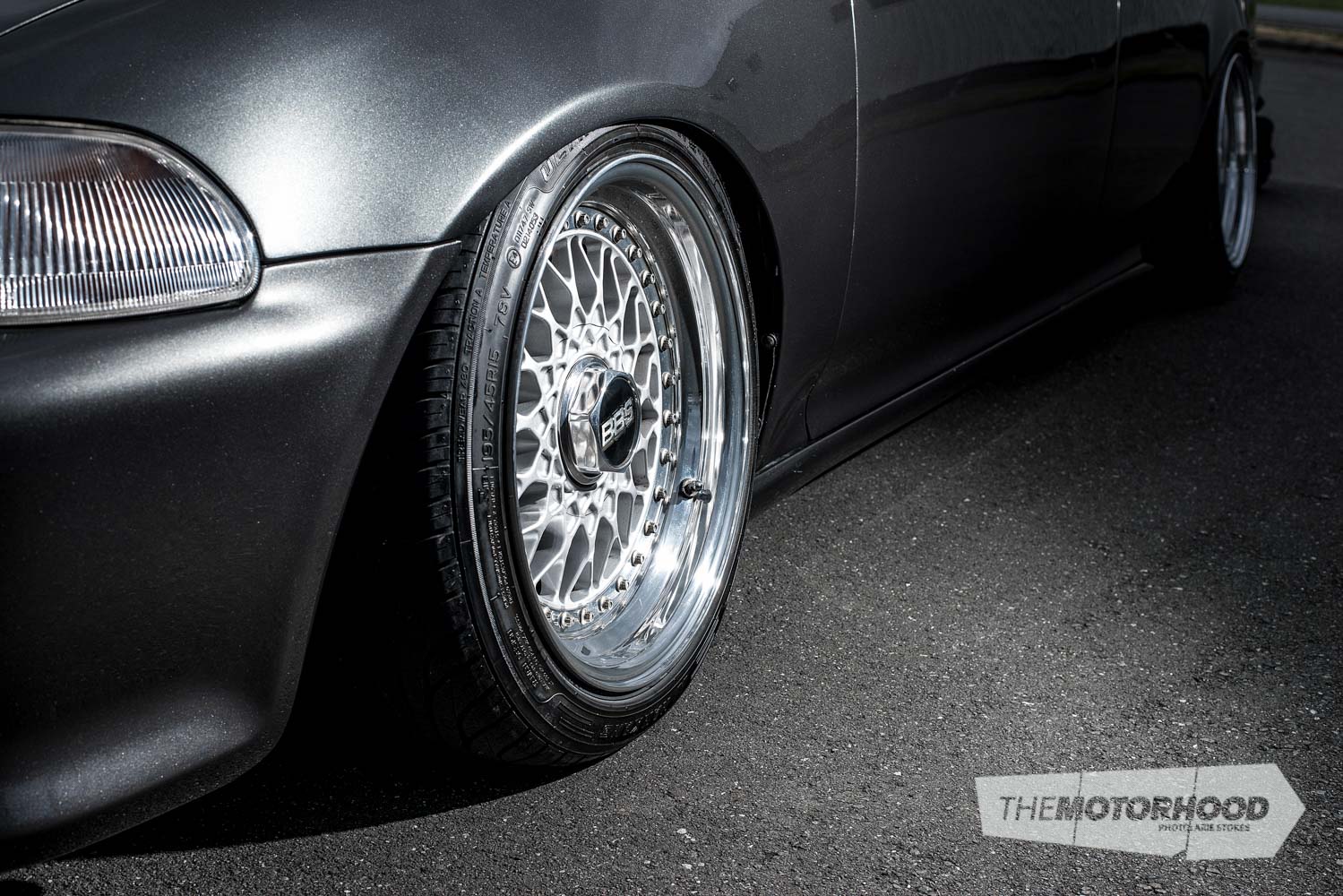
Thanks to their extremely potent factory camshafts and race-like factory heads, Honda engines respond extremely well to forced induction, and Simon’s example was no exception. Thanks to the high-mounted Garrett T3/T4, the now forged B18C was easily able to churn out 255kW (342hp) to the front wheels, on only 15psi. With headwork and more boost, the B-series motor will effortlessly join the NZPC 300kW club, hey, possibly even the 400kW club. However Simon doesn’t plan to push for more power just yet, as the Civic was made for cruising with his mates and showing off his AirREX product, not hazing the front treads.
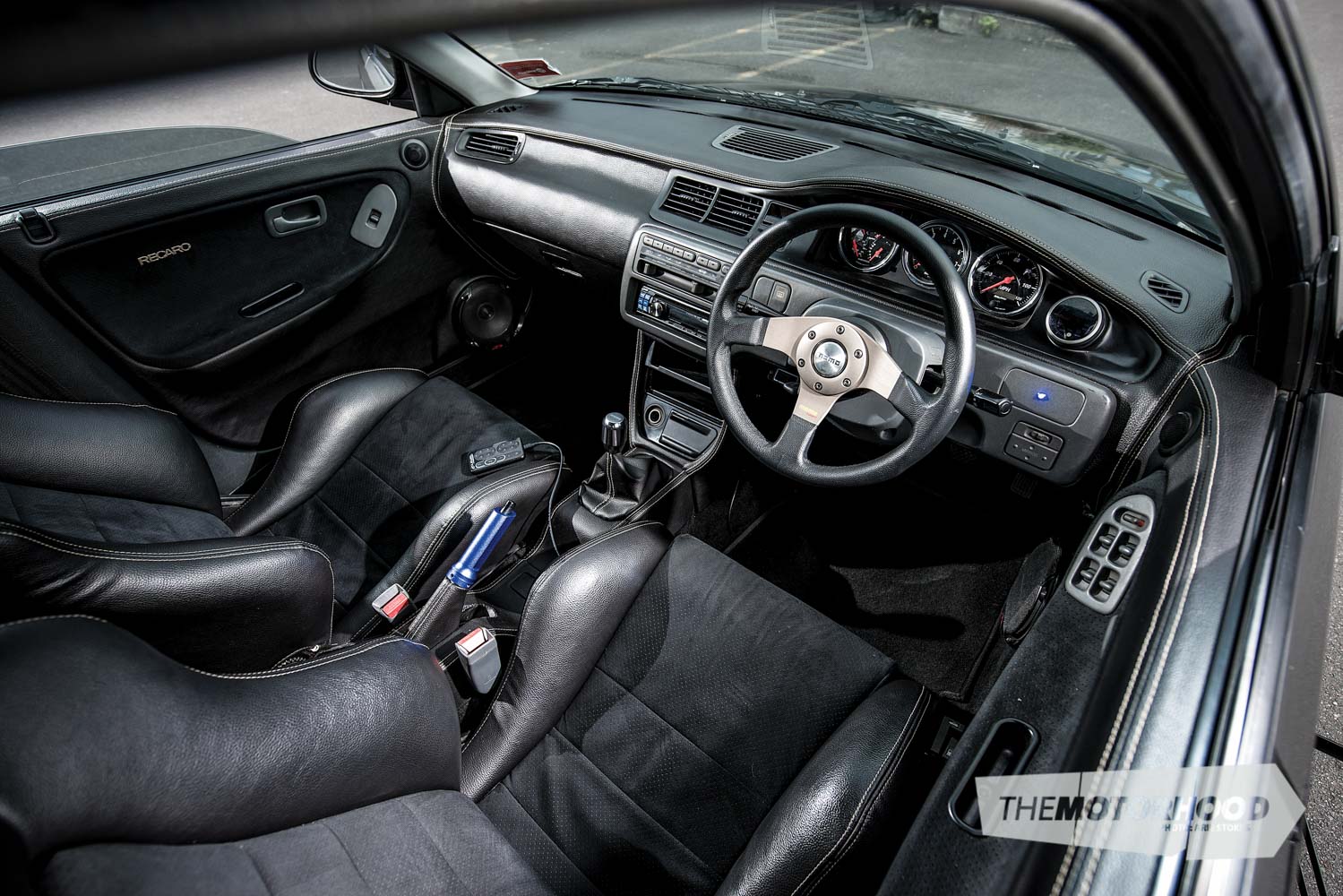
No cruiser would be complete without a cosy interior, and this was an area that also received plenty of attention. The original plan was to fibreglass the dashboard, but after he purchased the current black-with-gold-stitched Momo steering wheel, Simon had finally found a colour scheme better suited to the Civic. Retrimmed in black vinyl, grey perforated suede and gold stitching by Waikato Motor Trimmers, the seats, dash, and door cards have a luxury ’00s European feel, and provide much more comfort than the standard equipment ever did. The interior really was the icing on the cake for Simon. Although he’s nowhere near done, he tells us that the Civic will be kept for life, and forever upgraded. We agree that sinking your heart and soul into a project for that long would form an unbreakable bond, so we’re excited to see what Simon comes up with next.
View fullsize
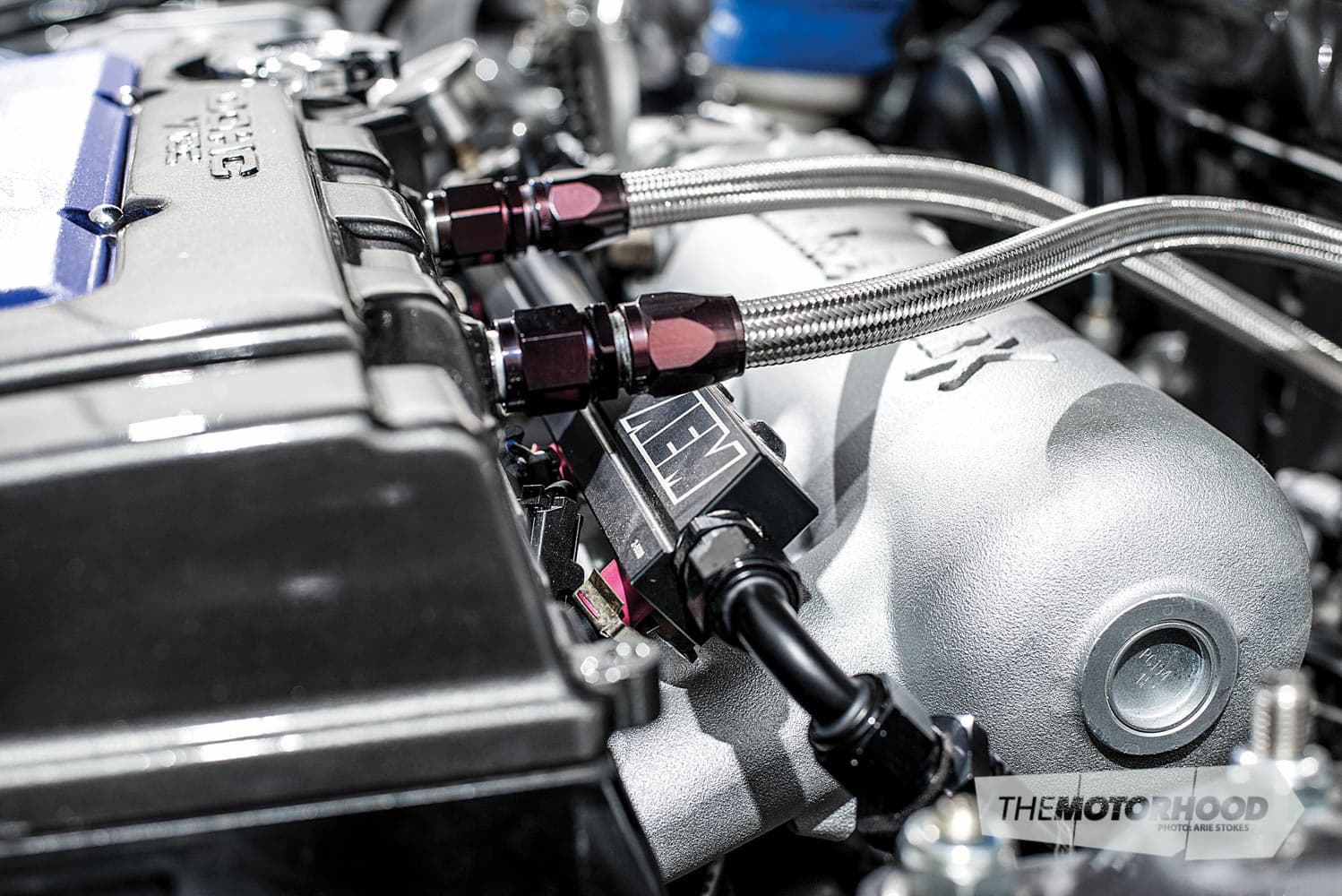
View fullsize
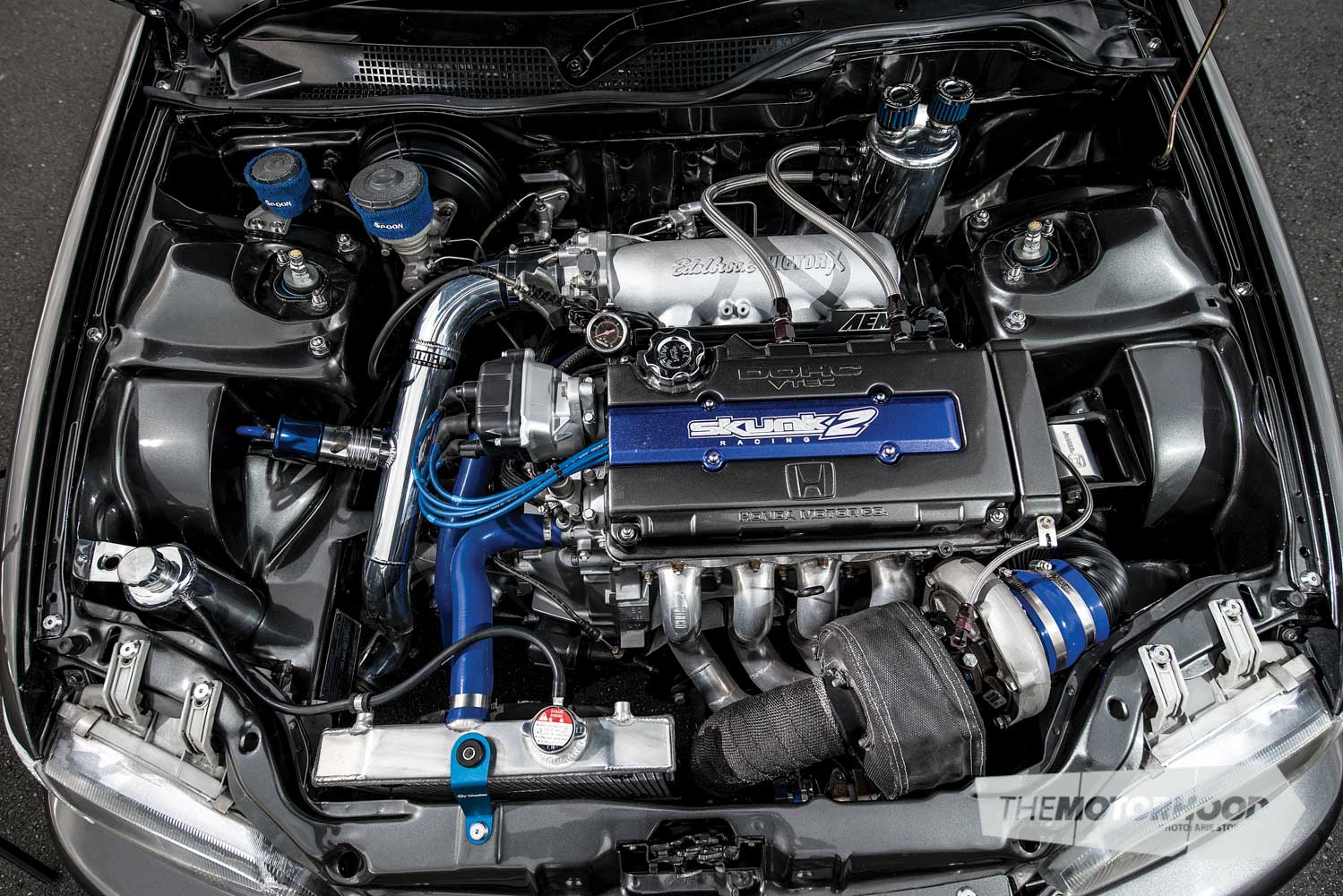
View fullsize
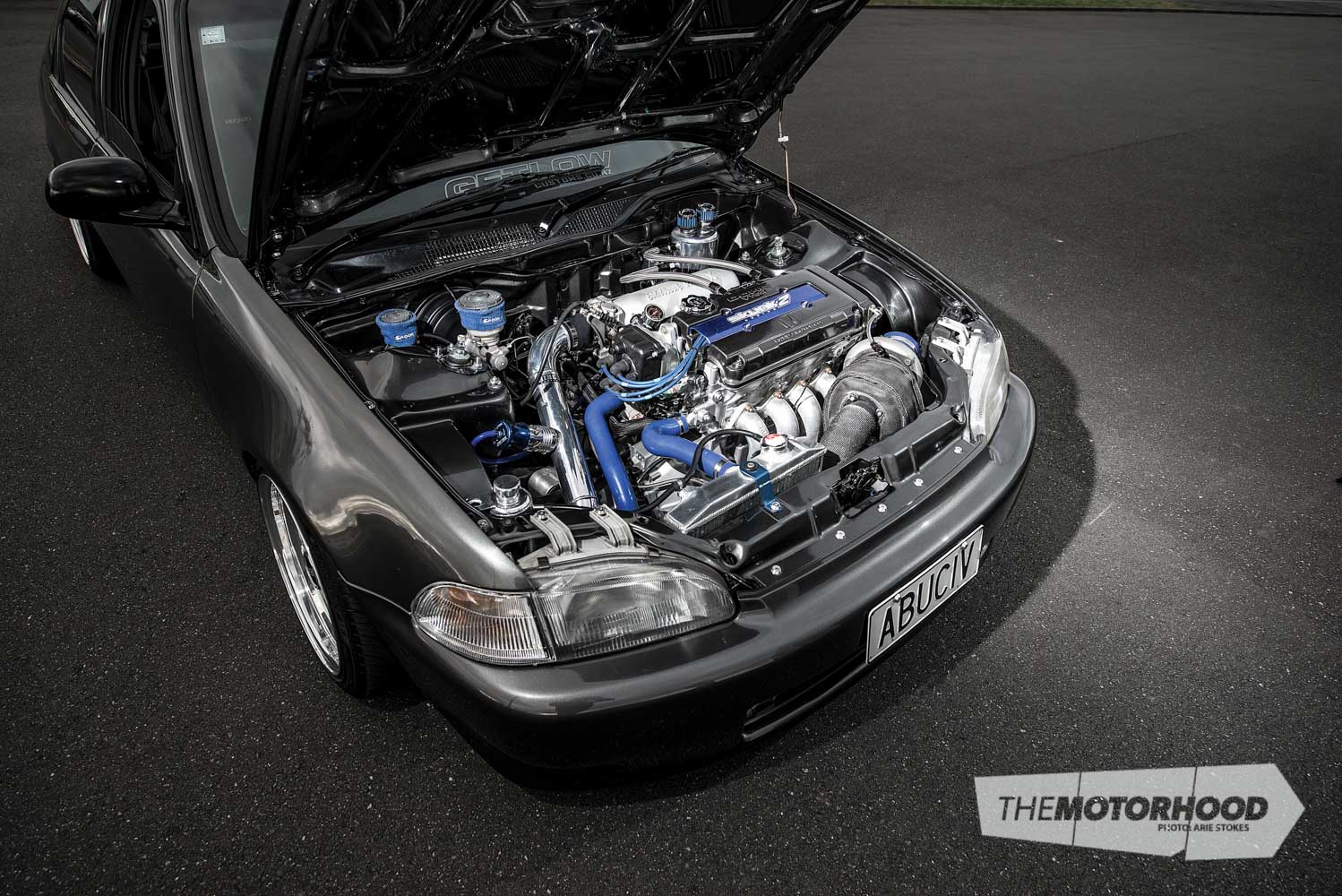
View fullsize
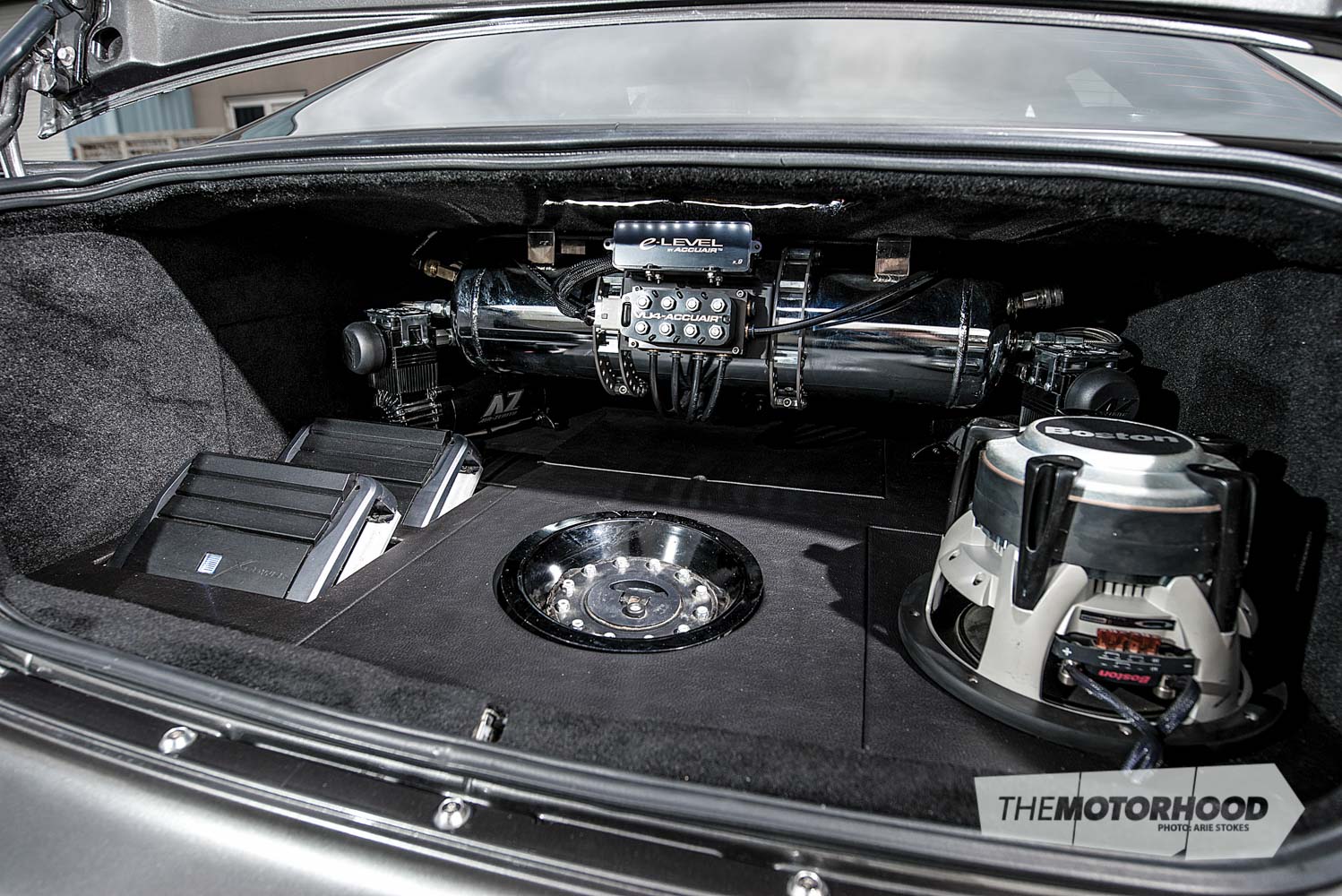
View fullsize
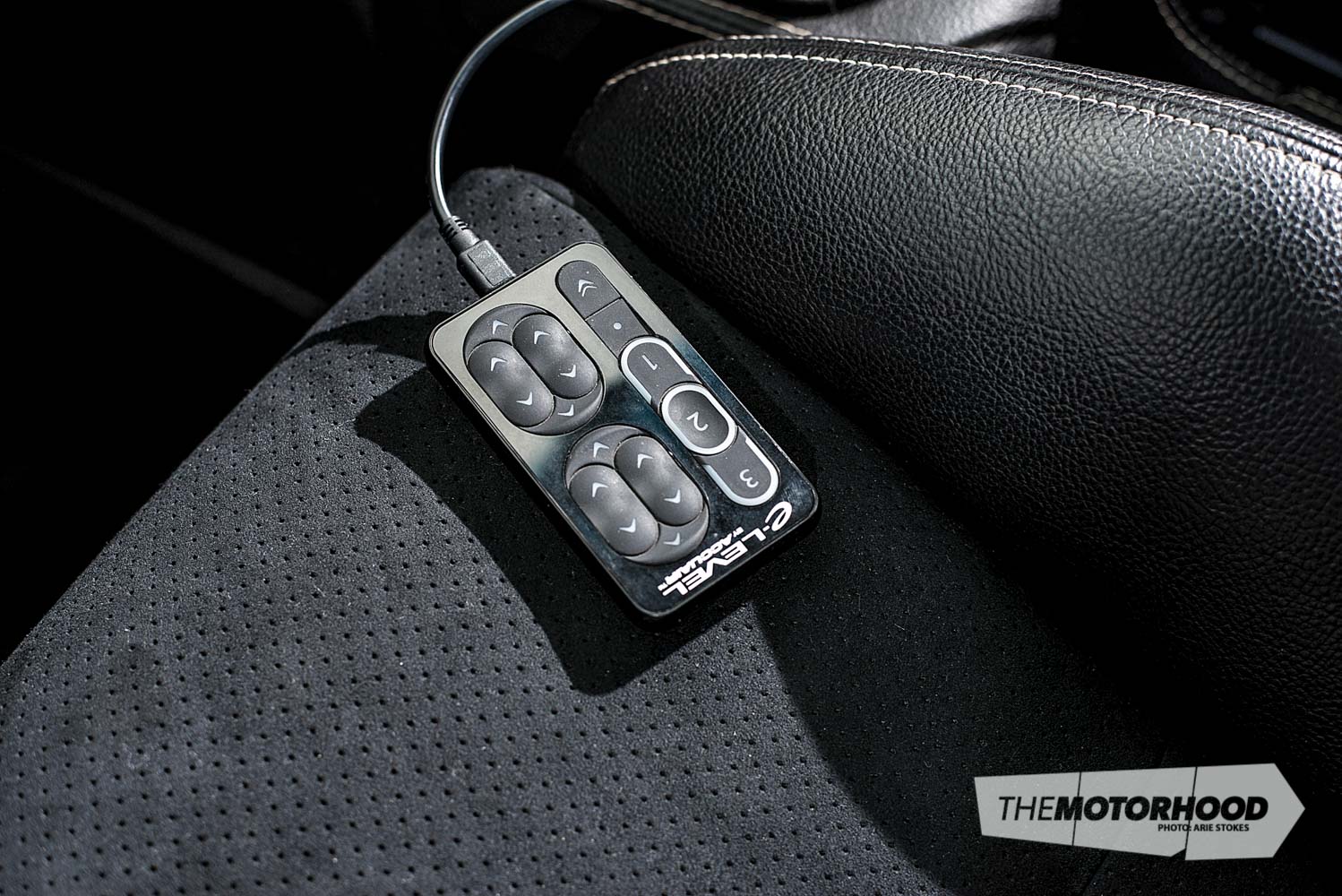
View fullsize
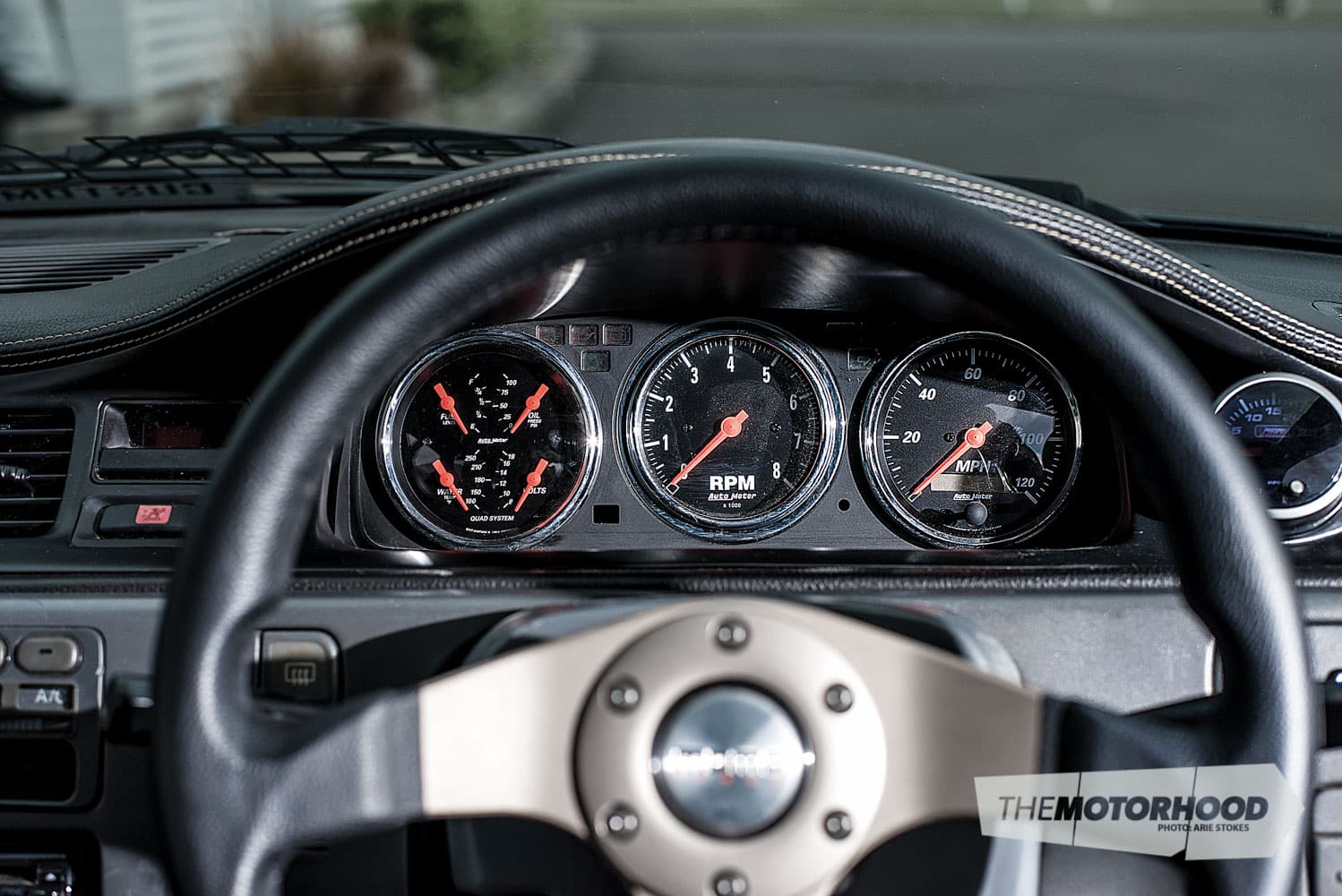
View fullsize
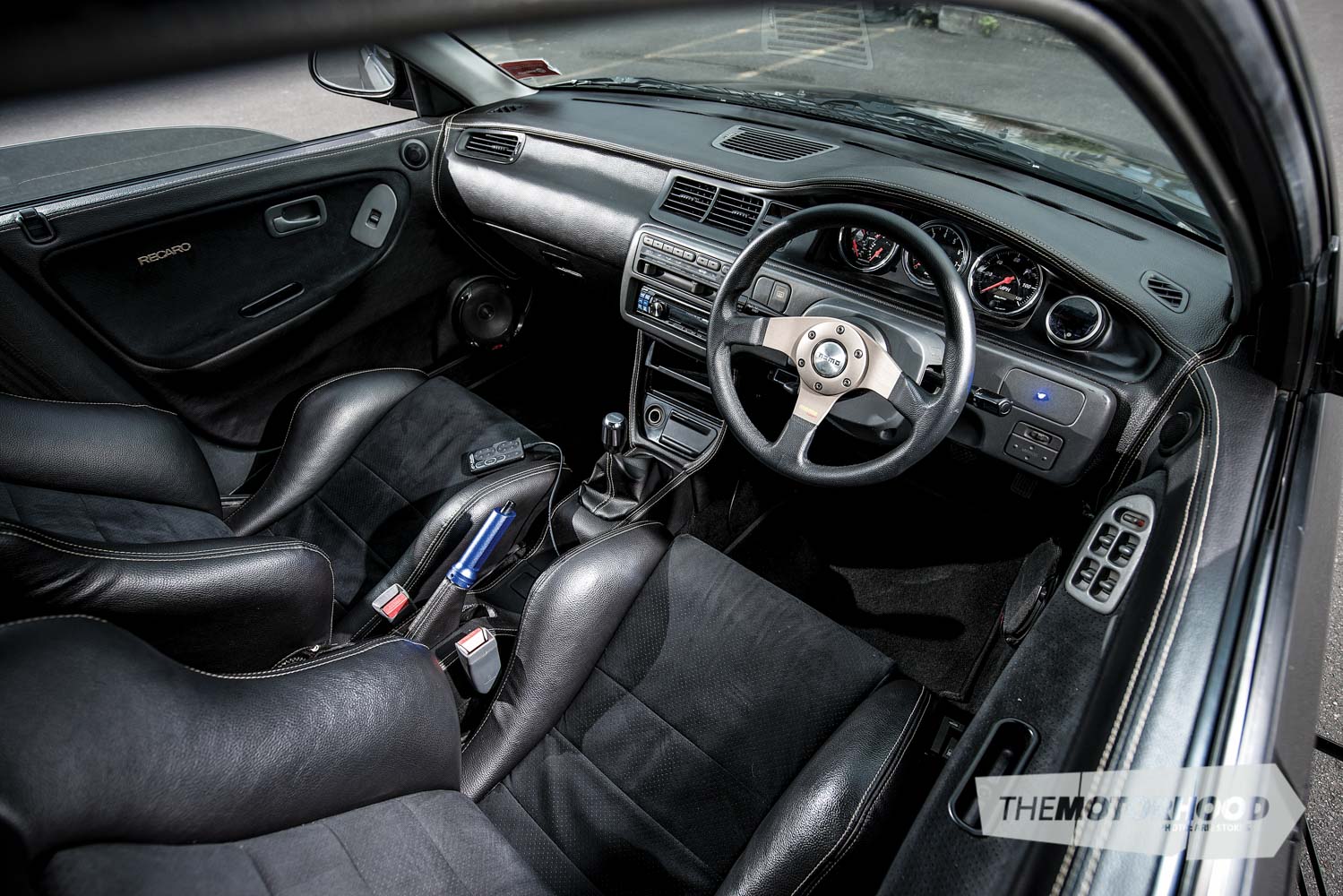
View fullsize
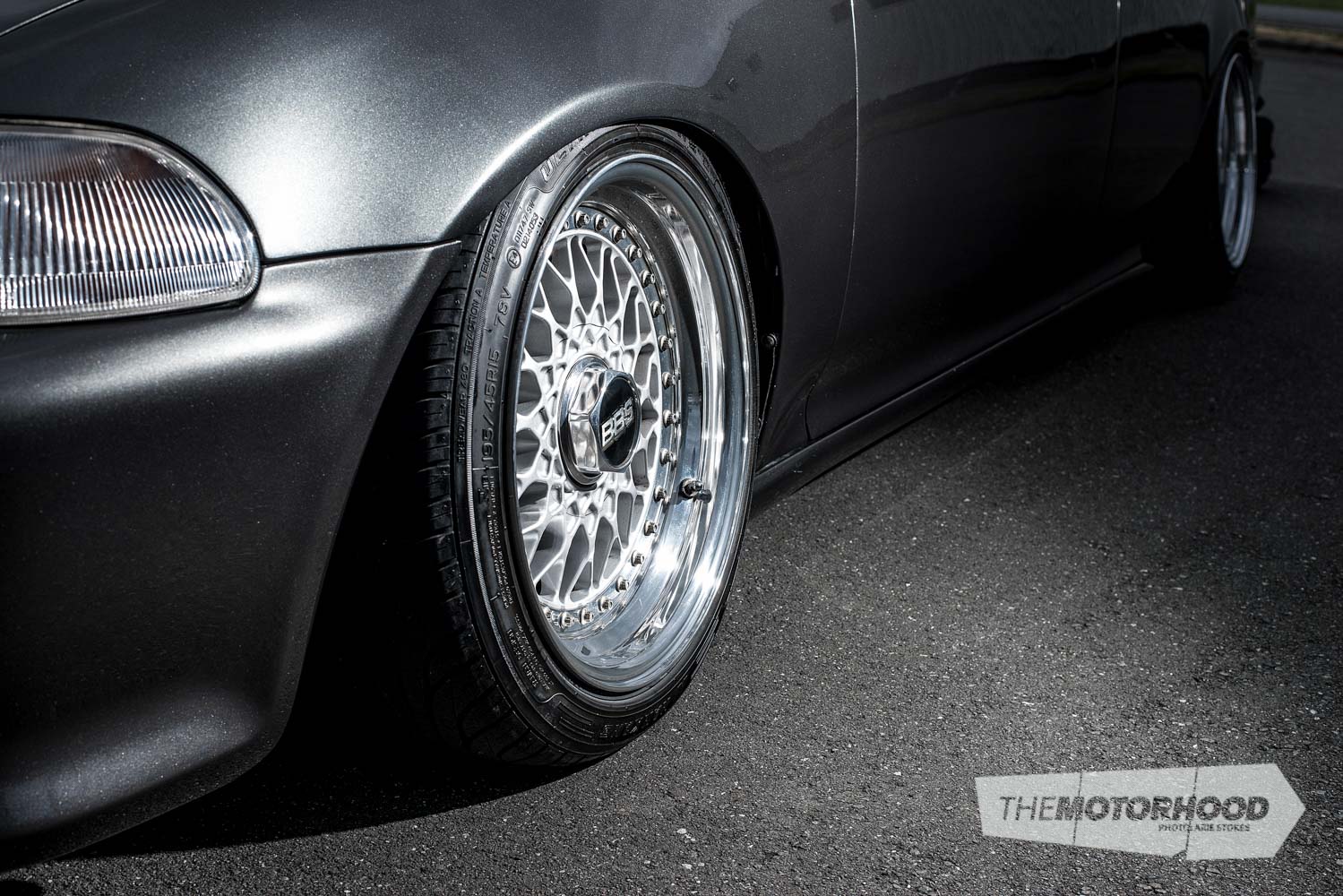
View fullsize

View fullsize
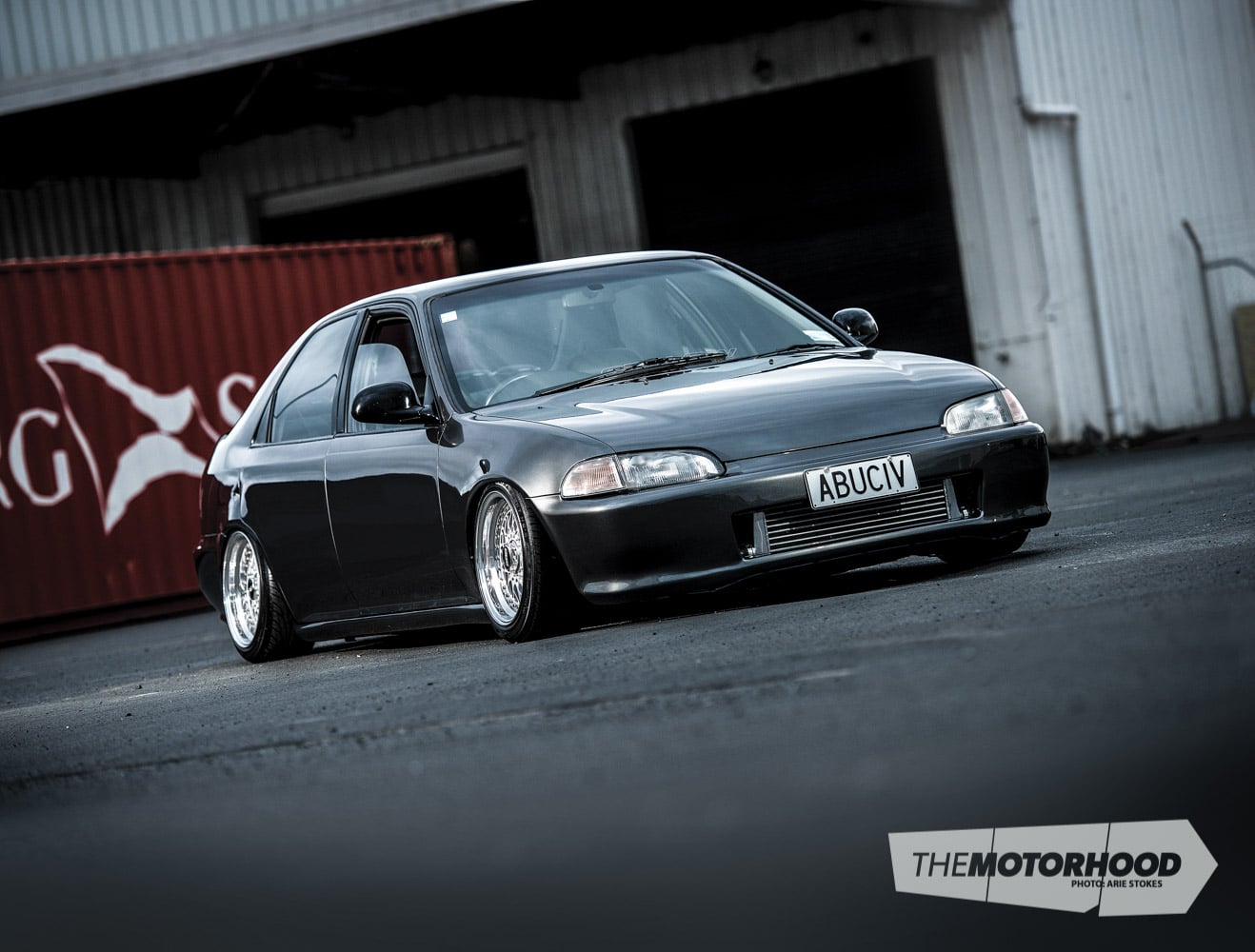
View fullsize
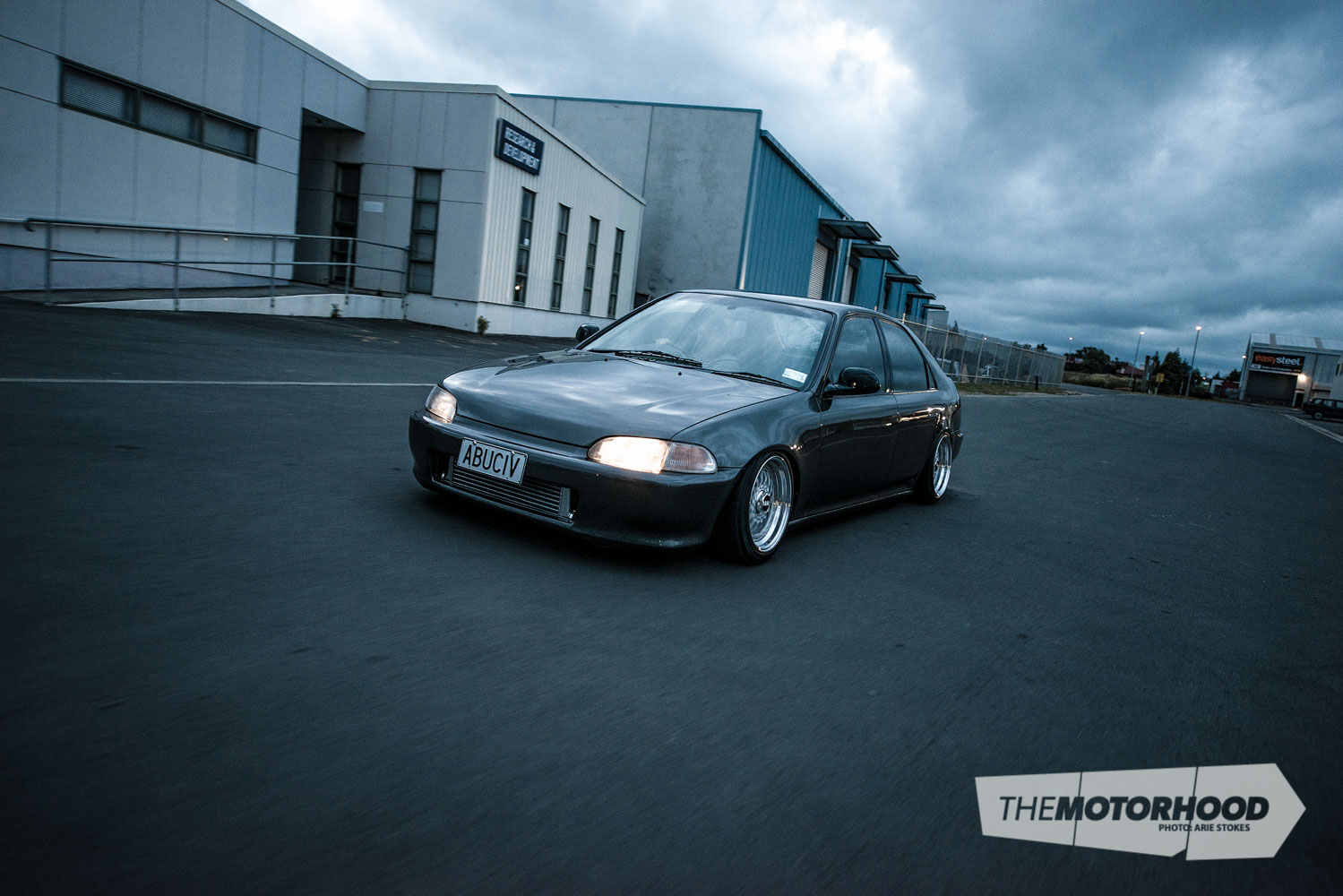
View fullsize
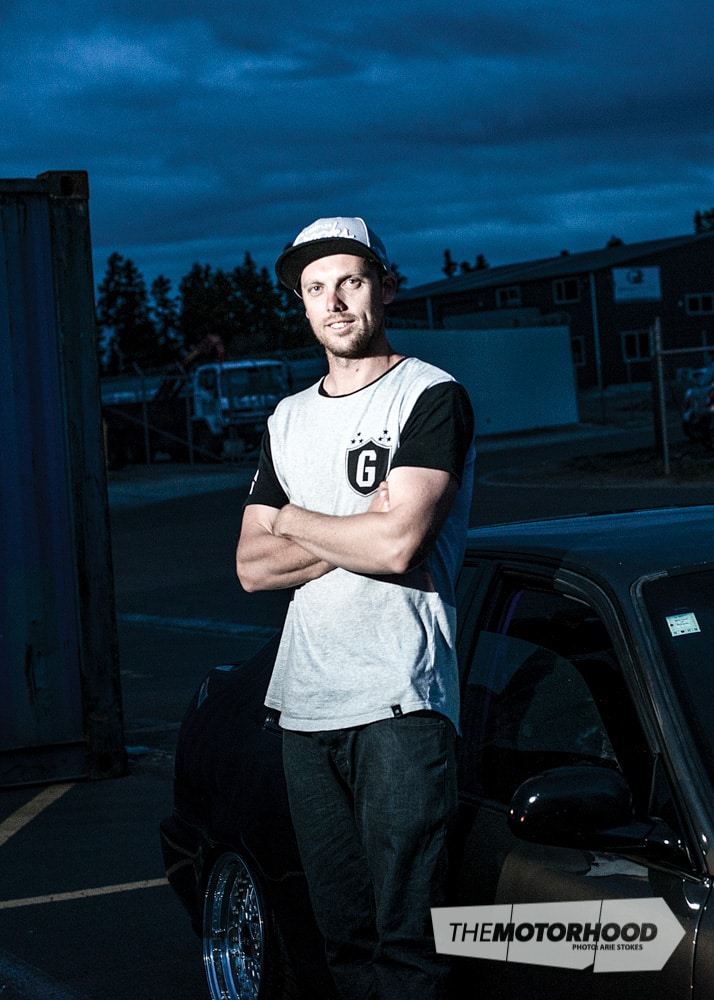
1992 Honda Civic Ferio (EG8)
Engine
- Model: B18C, 1800cc, four cylinder
- Block: Wössner forged pistons, ACL race bearings, Molnar H-beam conrods
- Head: Factory
- Intake: Edelbrock Victor X intake manifold
- Turbo: Garrett T3/T4, custom Sinco manifold
- Wastegate: 38mm Turbosmart Ultra Gate
- BOV: Turbosmart
- Fuel: Bosch fuel pump, DSR 1000cc injectors, AEM fuel rail, AEM fuel-pressure regulator, Aeroflow fuel pressure gauge, stainless-steel braided fuel lines, fuel cell
- Ignition: NGK leads, NGK spark plugs
- Exhaust: Three-inch mild-steel system, three resonators
- Cooling: Drift Max intercooler
- ECU: Link G4 Atom
- Other: Turbosmart boost controller, deloomed engine bay, Sinco oil catch can, Innovative billet engine mounts
Driveline
- Gearbox: S80 five-speed manual
- Clutch: Exedy sports
- FLywheel: B18C
- Diff: S80 LSD
Support
- Struts: AirREX air struts
- Brakes: (F&R) slotted discs, SiR calipers and brake pads
- Other: Skunk2 lower control arms, Hardrace camber arms, Hardrace front lower-roll-centre ball joints, Accuair e-Level management, twin 23-litre air tanks, twin Air Zenith compressors
Shoes
- Wheels: (F) 15×8-inch BBS RS (R) 15×8.5-inch BBS RS
- Tyres: 195/45R15 Nankang
Exterior
- Paint: Respray in Ferrari Silverstone
- Enhancements: Custom front bumper, shaved door handles, shaved roof gutters, shaved side mouldings, shaved fuel flap, shaved rear inner tail lights, shaved rear number-plate insert and side indicators
- Other: Front and rear tubs
Interior
- Seats: Retrimmed Recaro SR3 seats in black with perforated suede with gold stitching, retrimmed SiR Civic rear seats
- Steering wheel: Momo
- Instrumentation: Auto Meter, digital air suspension gauge
- ICE: Alpine head unit, six Alpine Type R speakers, twin Alpine amps, 10-inch Boston subwoofer, false floor in boot
- Other: Momo gear knob
Performance
- Power: 255kW (342hp) at the wheels on 15psi of boost
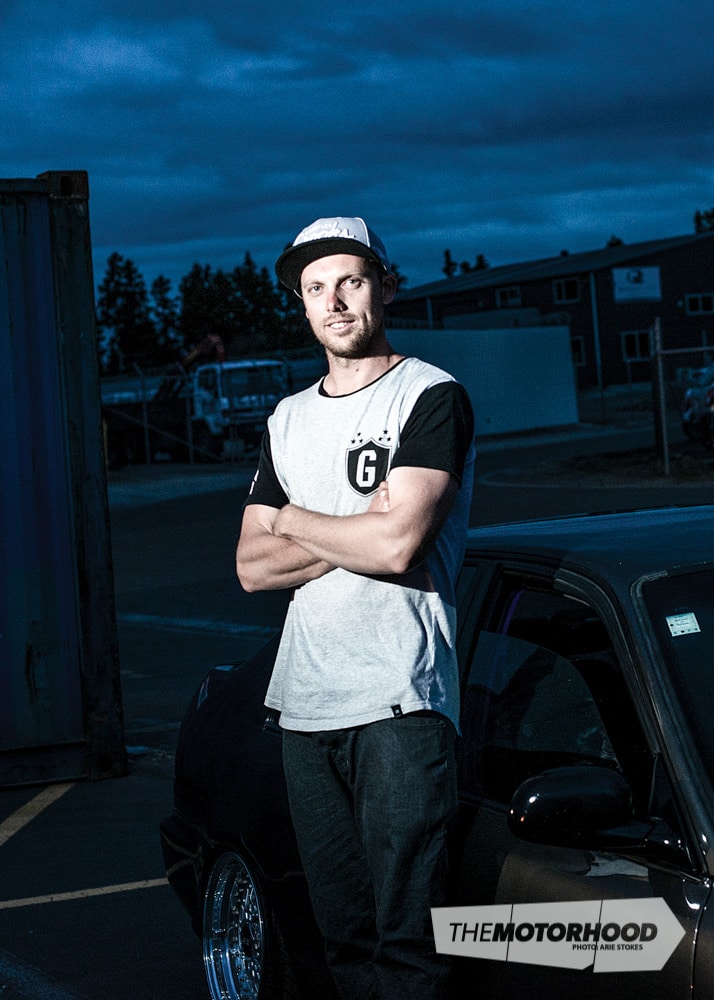
Driver profile
- Driver/owner: Simon Dove
- Age: 30
- Location: Hamilton
- Build time: Seven years
- Length of ownership: 13 years
- Thanks: Big thanks to my friends and family, Hamilton Collision Repairs for the amazing panel and paint, Lin at CDM for putting in so many hours building the engine, Sinco for doing a great job, the guys at Waikato Motor Trimmer for doing a great job on the interior, and big thanks to Stu Wot for the long nights wiring the car
This article was originally published in NZ Performance Car Issue No. 230. You can pick up a print copy or a digital copy of the magazine below:





